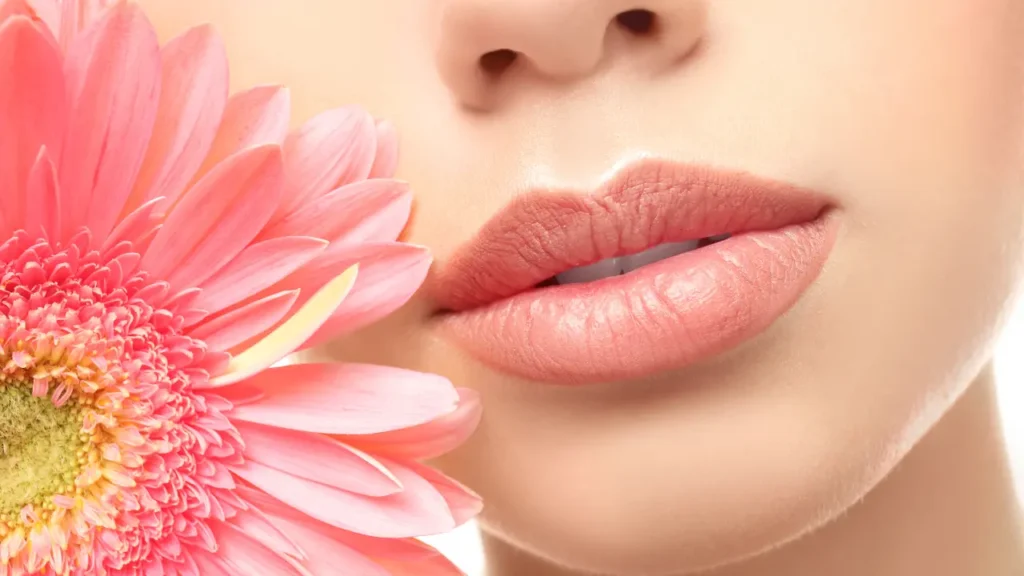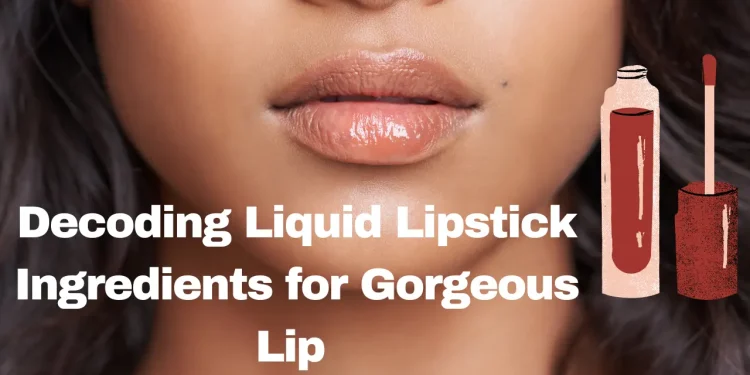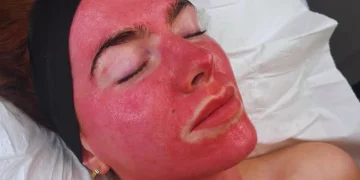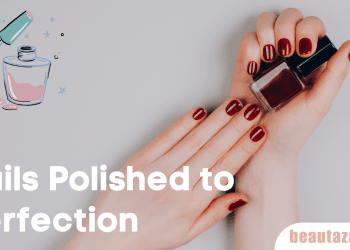Since liquid lipstick has such a long wear time and a high pigment content, it has become a mainstay in many cosmetic collections. However, just as with any cosmetic product, it’s critical to comprehend the substances used and how they could impact our health. Making judgments regarding the products we put on our lips requires knowledge of the contents, which may be challenging. In this article, we’ll discuss “liquid lipstick ingredients.” When you finish reading this article, you will have the information necessary to make informed judgments regarding the items you use on your lips.
Common Liquid Lipstick Ingredients
Liquid lipstick is smooth, pigmented, and long-lasting. Liquid lipstick has several common properties and functions:
- Pigments colored lipstick. Dye—natural or synthetic—is applied significantly to create rich, opaque color.
- Solvents dissolve and smooth materials. Lipstick uses silicone or alcohol to distribute pigments and evenly create a long-lasting, transfer-proof finish.
- Emollients soften lips. They smooth the lipstick and prevent dryness. Liquid lipstick emollients include castor, jojoba, and shea butter.
- Thickeners provide a creamy texture. Manufacturers use these synthetic or natural chemicals in small amounts to improve the product’s surface.
- Preservatives: Preservatives extend liquid lipstick’s shelf life and inhibit bacterial development. Benzyl alcohol and phenoxyethanol are common liquid lipstick preservatives.
The purpose of each ingredient and how it contributes to the product’s formulation.
Listed below is a more thorough description of each ingredient’s function in liquid lipstick and how it affects the formulation of the product:
- Lipstick manufacturers apply pigments in high quantities to give the color a vivid and impenetrable quality. While scientists produce synthetic dyes in a laboratory, plant sources mainly provide natural colors.
- Solvents: Manufacturers dissolve these chemicals to achieve a uniform, smooth texture. Additionally, they aid in uniformly dispersing the pigments to give a durable, transfer-proof surface. Liquid lipstick often contain the solvents silicone and alcohol.
- Emollients: Emollients moisturize and soften the lips to give them a smooth texture and prevent lipstick from drying out. They might provide the end product with more luster. Shea butter, castor oil, and jojoba oil are typical emollients.
- Thickeners: Manufacturers add thickeners sparingly to products to enhance their texture. They aid in generating a creamy, silky smoothness that simplifies applying lipstick. Liquid lipstick often contains beeswax, synthetic waxes, and silica as thickeners.
- Preservatives: Manufacturers treat products with preservatives to prolong their shelf lives and prevent the growth of germs. They ensure the product has a longer shelf life and is safe for use. In liquid lipstick, preservatives like phenoxyethanol and benzyl alcohol are often utilized.
Harmful Ingredients to Avoid- (Liquid lipstick ingredients)
Liquid lipstick ingredients often include dangerous substances. Here are the possible dangers of three of the most problematic ingredients:
- Lead is a heavy element in various cosmetic pigments, especially lipsticks. Lead exposure may cause multiple health issues, such as behavioral issues, learning challenges, and developmental delays. Even little levels of lead may be dangerous since it can build up over time in the body.
- Synthetic preservatives called parabens are used to prolong the shelf life of cosmetics. Researchers have associated them with endocrine disturbance and discovered them in breast tumors, raising the possibility of a connection to breast cancer. Even though the data is not definitive, many consumers avoid paraben-containing goods.
- Manufacturers use phthalates as plasticizers to increase the flexibility and durability of plastics. They serve as a solvent and scent element in cosmetics as well. Phthalates have been connected to issues with development and reproduction, including low sperm counts, early puberty, and birth abnormalities.
The potential health risks associated with these ingredients and why they should be avoided.
Lead, parabens, and phthalates, among other toxic substances often present in liquid lipsticks, have been connected to severe health problems. Here are some details on these dangers.:
- Lead: Lead exposure may substantially affect health, particularly in young children and pregnant women. Lead may build up in the body over time and cause behavioral troubles, learning disabilities, developmental delays, and other health concerns. A higher risk of cancer has also been associated with lead exposure.
- Endocrine disruption, which may impair the body’s hormone balance, has been related to parabens. Medical researchers have linked the endocrine imbalance to an increased risk of breast cancer and reproductive issues, such as infertility. Although the connection between parabens and cancer is unknown, parabens have also been discovered in breast cancers.
- Phthalates: Medical researchers have linked phthalates to several health issues, including reproductive and developmental problems. Early puberty, a decline in sperm count, birth abnormalities, and other conditions have all been related to phthalate exposure.
Natural and Organic Liquid Lipstick Ingredients

Using natural and organic components in cosmetics, particularly liquid lipsticks, has recently gained popularity. While farmers cultivate organic components without artificial pesticides, fertilizers, or genetic alteration, manufacturers source natural ingredients from plant or mineral sources. The advantages of employing natural and organic elements in liquid lipsticks include the following:
- Natural and organic components are often kinder to the skin than synthetic ones, which may irritate or trigger allergic responses.
- Environmentally friendly: Since synthetic pesticides and fertilizers may damage the environment, organic products are produced without them. Manufacturers often obtain them sustainably, which refers to a method of harvesting that respects the environment and does not deplete natural resources.
- Numerous organic components are nutrient-dense and high in vitamins, minerals, and antioxidants that help nourish and safeguard the skin. For instance, shea butter and coconut oil contain fatty acids that help soothe and nourish dry, chapped lips.
- Safe for individuals with sensitive skin: Natural or organic ingredients are often safe for those with sensitive skin since they are less likely to include harsh chemicals or artificial scents that irritate them.
Choosing the Right Liquid Lipstick
Choosing the finest liquid lipstick involves various factors. Find the right product using these tips:
- As indicated, check the contents list for harmful or irritating compounds. Look for goods labeled “paraben-free,” “phthalate-free,” or “lead-free,” and if possible, pick organic and natural ones.
- Lipstick hues suit your skin tone. Warm undertones should choose orange or yellow colors. For cool undertones, use pink or blue stains. You may try colors on your skin in shops or online.
- The end: Liquid lipsticks are matte or glossy. After deciding on a style, choose a finish.
- Long-lasting liquid lipsticks are famous. Some remain longer. Long-wearing or transfer-proof lipsticks will last all day.
- Read liquid lipstick reviews before buying. Review the product’s formulation, wear time, and quality.
Conclusion
Overall, liquid lipsticks have become popular cosmetics. However, it is vital to know their composition and the health risks of lead, parabens, and phthalates. Liquid lipsticks without toxic chemicals and natural and organic products may reduce the risk of health problems.
Choose a liquid lipstick based on skin tone, finish, and wear time. Read reviews and test the product before applying to find the best one. By paying attention to the ingredients and being careful, you may enjoy a gorgeous liquid lipstick without harming your health or the environment.
Read –














